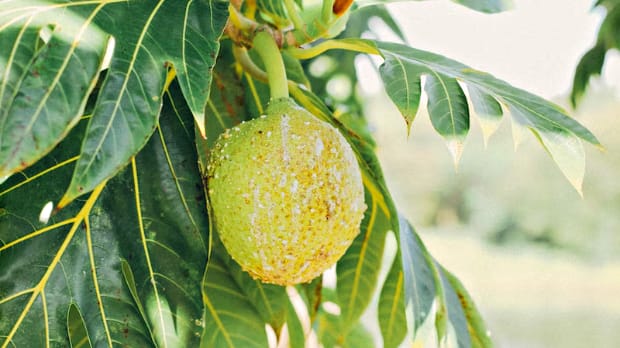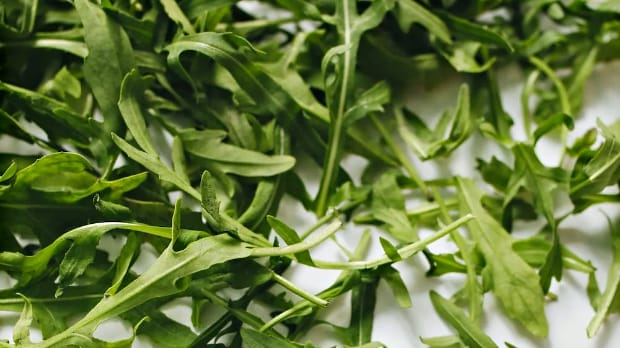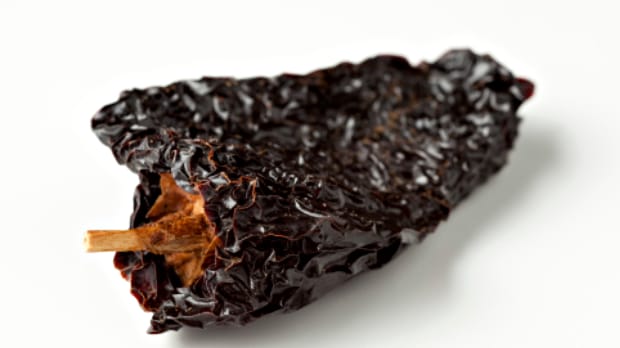What is Breadfruit?
Breadfruit, pronounced [bread-fruit], is a unique fruit that behaves more like a vegetable due to its starchy consistency. Although it is a fruit, its yellow flesh is firm and dense like unripe potatoes. Breadfruit can range in weight between two to five pounds, making it a substantial ingredient in any dish. As it ripens, it softens to the texture of a mango but without the sweetness that one might expect from a fruit. The root of the name “breadfruit” comes from how it feels and tastes when eaten before it is ripe. Indeed, it not only feels like fresh bread but also tastes like it! The trees are highly prized in the Pacific not only because of their delicious fruits but also because of the value of their wood.
In Hawaii, for instance, the wood of breadfruit trees was crafted into canoes, drums, and even surfboards! Similarly, in places like Guam and Samoa, the bark of the tree was used for creating tapa cloth. This shows just how valuable these trees are to people in different parts of the world.

Breadfruit has become a starchy staple food in the Caribbean and Pacific islands. People cook it in a variety of ways, including frying, baking, and boiling. It is sometimes mixed with coconut milk to make a pudding, used like a potato in stews, or whipped and diced for use in salads that resemble potato salad. Overall, breadfruit is a delicious and versatile food that can be used in many creative ways. Its unique starchy texture sets it apart from other fruits, while its valuable properties make it an essential component of life for many people living in the Pacific and Caribbean regions.
Nutritional Benefits
This large, round fruit may seem intimidating at first glance, but it is packed with essential nutrients that can help you stay healthy and energized. First and foremost, breadfruit is a great source of fiber, which aids in digestion and can promote regularity. Additionally, the fiber can help lower cholesterol levels and reduce the risk of heart disease.
But that’s not all – breadfruit is also rich in vitamin C, an important antioxidant that can boost your immune system and protect against cellular damage. Plus, it contains potassium, which helps regulate blood pressure and supports healthy muscle function.

If you are looking to add more plant-based protein to your diet, breadfruit is a great choice. It is a good source of amino acids, the building blocks of protein, and can help promote muscle growth and repair. Finally, this fruit is versatile and delicious, making it a great addition to any meal. Whether you enjoy it roasted, steamed, or mashed, you can reap the nutritional benefits of this amazing fruit while savoring its unique flavor. So next time you are at the grocery store or farmer’s market, don’t overlook this nutritional powerhouse. Incorporate this unique fruit into your meals and feel the difference in your overall health and well-being.
Types Available
Do you know that there are various types of breadfruit you can find in the market? Breadfruit, also known as Artocarpus altilis, is a tropical fruit that is available in different shapes, sizes, and tastes. One type is the Ma’afala breadfruit, which is dark brown or green in color, with dense flesh and a sweet, nutty flavor. Another type is the Ulu Fitu, which is round and green, with soft flesh and a mildly sweet taste.
There’s also the Lele breadfruit, which is oval-shaped, has yellow skin, and a rich, buttery flavor. The Kapi’ikoa breadfruit, on the other hand, is smaller and round-shaped, with a less dense flesh and a slightly sour taste.
Lastly, the Puero breadfruit is dark green when unripe and turns yellow when ripe, with a soft, sweet, and savory flavor. So check out the different types of breadfruit available in your area and experiment with them in your cooking experience. With its many varieties and different flavors, you’re sure to find one that suits your palate and taste preferences!
What are the Best Uses?
One of the best ways to enjoy breadfruit is by using it as a gluten-free substitute for bread or potatoes. You can roast it, fry it, or even mash it like potatoes. In addition, it can be used as a base for soups, stews, and curries. Its neutral flavor makes it a great complement to a wide variety of other ingredients, and its high fiber content can help keep you feeling full and satisfied. Another great way to incorporate breadfruit into your diet is by using it in sweet recipes. The versatile fruit can be baked into bread, muffins, or cakes, and it can also be used as a base for smoothies and desserts.
Finally, if you’re interested in sustainable agriculture and food production, you’ll be happy to know that breadfruit is an environmentally friendly crop that can help feed communities and boost local economies. So, whether you’re looking for a healthy, gluten-free substitute for bread and potatoes, a versatile ingredient for soups and stews, or a tasty addition to your baking and dessert recipes, breadfruit is definitely worth trying!
How do You Store Breadfruit?
Do you love breadfruit but always seem to have trouble storing it? Don’t worry, you’re not alone! This tropical fruit is a common staple food in many parts of the world, and it’s known for its starchy texture and sweet flavor. However, storing it correctly can be a challenge. If you don’t have the right knowledge, your fruit may go bad before you have a chance to enjoy it. So, how do you store it? The first thing you need to understand is that breadfruit is a tropical fruit and has a short shelf life. Therefore, it’s essential to store it in the right way to maximize its freshness. The best way to store it is by wrapping it in a paper or plastic bag and placing it in the refrigerator. You can also wrap it in a damp cloth before storing it to help maintain its moisture. Another option is to store it in a cool, dark place, away from direct sunlight.
If you’re planning to store breadfruit for an extended period, consider freezing it. Simply peel the fruit, remove the core, and slice it into small pieces. Then, store the pieces in an airtight container and freeze them. Frozen breadfruit can last up to three months, and you can easily thaw it overnight in the refrigerator. In conclusion, storing this interesting fruit can be a little tricky, but with the right knowledge and techniques, you can enjoy its delicious taste for longer periods. By following these simple steps outlined above, you’ll be able to enjoy your breadfruit for days or even months to come. Happy storing, and happy eating!
How to Prepare Breadfruit
Hey there, health and food enthusiasts! If you’re looking to add something new and exciting to your meal plan, why not give breadfruit a try? This tropical fruit is not only tasty, but also packs a powerful nutritional punch. Here’s how you can prepare it for maximum flavor and health benefits. First, select a ripe fruit. You’ll know it’s ready when the skin is slightly soft to the touch and the fruit gives a little when you press it.
Cut off the stem and bottom of the fruit, and then peel off the skin. Next, cut out the core and chop the white flesht into wedges or cubes. Keep in mind that breadfruit has a sticky sap, so it’s best to wear gloves or oil your hands to avoid getting it on your skin. Boil the pieces for 20-25 minutes or until it’s soft. Drain the water and let the fruit cool down. Optionally, you can then season it with salt, pepper, garlic, or other spices of your choice.
Heat some oil in a pan and fry the breadfruit until golden brown on each side. Serve this tropical fruit as a side dish or add it to salads, stews, or curries. Breadfruit is low in fat and calories, high in fiber, and a good source of vitamin C and potassium. So not only does it taste great, but it’s also a healthy choice for you and your family. Give it a try and let us know how you like it!
When is Breadfruit in Season?
So breadfruit is a versatile and interesting ingredient – but when is the best time to snag it? Well, let me tell you – the prime season for breadfruit is from late summer to early fall. This is when the fruit reaches its peak ripeness, making it the perfect time to savor its delicious flavors and take advantage of its nutritional benefits.
In case you’re unfamiliar with breadfruit, it’s a tropical fruit that is rich in essential vitamins, like vitamin C and potassium. It’s also a good source of dietary fiber, which is important for healthy digestion. But aside from its nutritional value, breadfruit is also versatile in the kitchen. You can use it as a substitute for potatoes in your dishes, or even roast it and serve it with some fresh herbs for a delicious and healthy snack. So why not try adding this exotic ingredient to your next shopping list? With its peak season in late summer to early fall, you can enjoy its full flavors and benefits while supporting local farms and businesses.
Improve Your Health With Seasonal Eating
What to Serve Breadfruit With?
- Jerk Chicken
- Grilled Fish
- Roasted Pork
- Coconut Curry
- Stewed Lentils
- Fried Plantains
- Mashed Potatoes
- Sautéed Vegetables
- Grilled Shrimp
- Sweet Potato Pie
What Traditional Cuisines Use Breadfruit?
Breadfruit is a traditional ingredient in cuisines from the Caribbean, Polynesia, Melanesia, Micronesia, and South and Southeast Asia. It is most often used in savory dishes such as curries, stews, or fried. It can also be boiled or baked, then served with butter or coconut milk. In some parts of the world, it is also made into chips or flour.
Tasty Recipes
- Spicy Breadfruit Fries
- Jamaican Breadfruit Rundown
- Breadfruit Tacos
- Roasted Mashed Breadfruit
- Breadfruit (Ulu) With Coconut Milk
Key Takeaways
- Breadfruit is a nutritious and versatile fruit that can be cooked in a variety of ways, including steaming, boiling, baking, and frying.
- Choose firm, unripe breadfruit for boiling, baking, and frying, and ripe fruit for steaming.
- When boiled or baked, serving it with a sauce or condiment will bring out its flavor.
- Frying it requires pre-soaking the slices in salted water to soften them before cooking.
- Ripe breadfruit can also be eaten raw as a snack or dessert.
- When buying this tropical fruit, look for one with a smooth skin and uniform color.
- Store unripe breadfruit in a cool, dry place and when it’s ripe it should be kept in the refrigerator.
References: Diversity and Health Benefits of Breadfruit: A Comprehensive Review | Nutritional, Health and Medicinal Benefits of Breadfruit (Artocarpus altilis): A Review | Consumption of Breadfruit as a Functional Food: A Review | Breadfruit – A Nutritional Food Source with Health Benefits | <a href="https://www.researchgate.net/publication/328052760_Nutritional_and_




